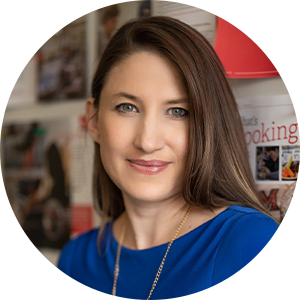Representation
Showcasing our students’ excellence is among our prime directives. It’s time to be more deliberate about seeking out students who live with disabilities. Make a conscious effort to find those students who use assistive devices and ensure they are featured. Invisible disabilities, such as chronic illnesses and sight and hearing impairments, are more challenging to depict in photos, but video interviews allow willing students to share their stories. Don’t relegate these testimonials to Disability Awareness Month; weave them into your content strategy throughout the year. To avoid tokenizing, never expect a student to represent an entire population. Showcase them as uniquely themselves, not as part of a monolith.
Make It Easy
While you are working with students with disabilities, ask them what they wish they had known when they were choosing a college. Then share that information in your marketing materials. I recently heard from a student who said she sought out images that showed campus sidewalks and building entrances to gauge how easy or difficult it would be to navigate campus. Another student shared that she clicked through institutional websites and immediately ruled out any campus that had inaccessible content. Another said she crossed a school off her list if it took too long to find information about accommodations. Rather than force students to seek out information on our massive and complex websites, make it easy. Don’t make them dig for details on accessibility or support services. Place that information front and center; nearly 20% of your students need to find it.
Advocate
Consider walking your campus and looking at it through the lens of a person who may find navigation difficult. Better yet, walk the campus with a person for whom accessibility may be an issue to garner their feedback. Advocate for improved wayfinding and clearer signage. Do campus tours accommodate individuals with mobility challenges? If not, can you propose a solution? Get creative. Can you use virtual or augmented reality? Can a regular tour specifically for students with physical disabilities be created? In what ways can you make it easier for a student to know he or she will be comfortable and supported on your campus?
These are just a few ways marketers can help build bridges with prospective students who are seeking a campus that is accessible and accommodating. Does it solve all the problems that students with disabilities face in college? Absolutely not, but it can help students feel more confident about their ability to succeed — something toward which we should all be striving.




